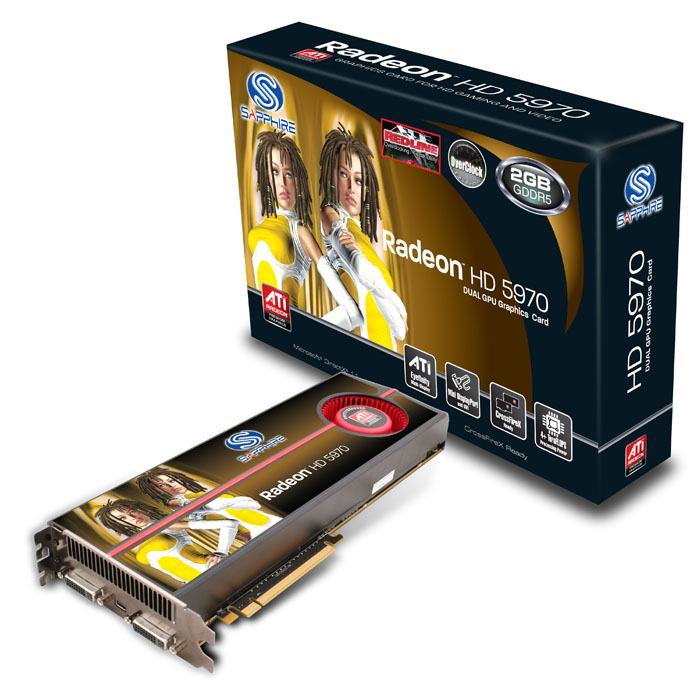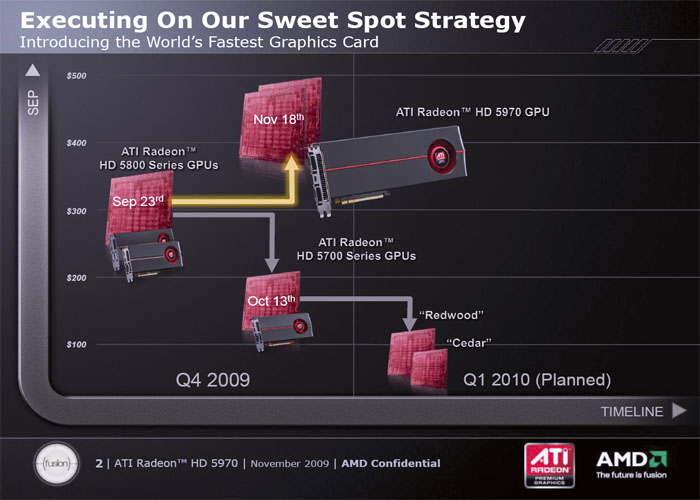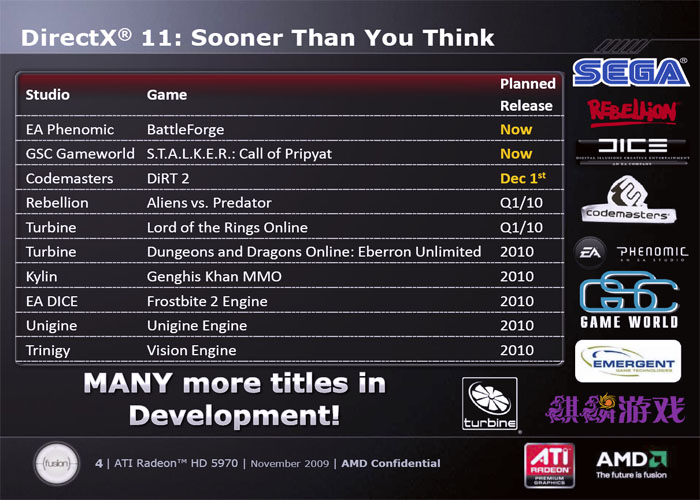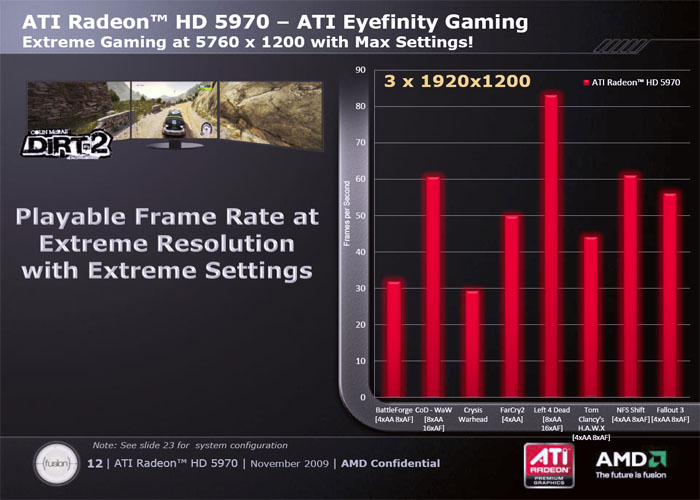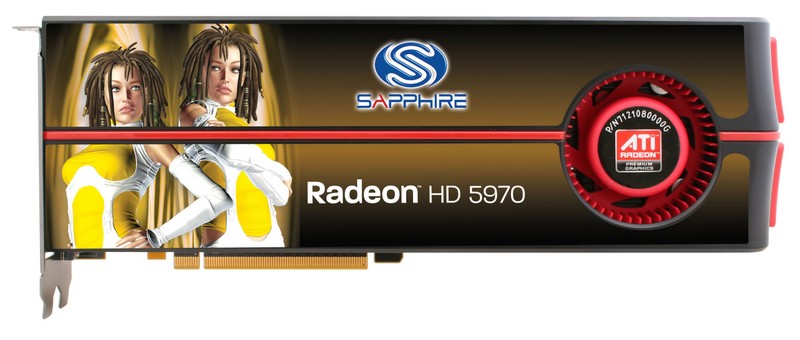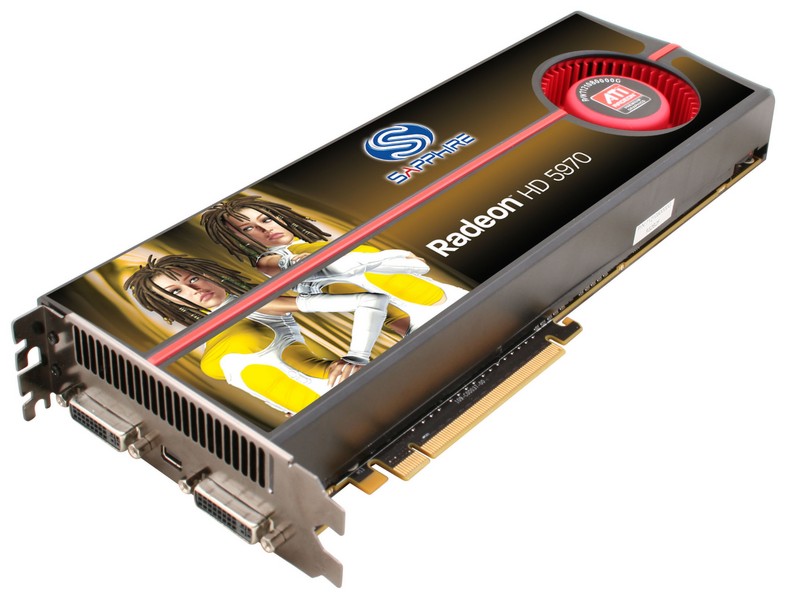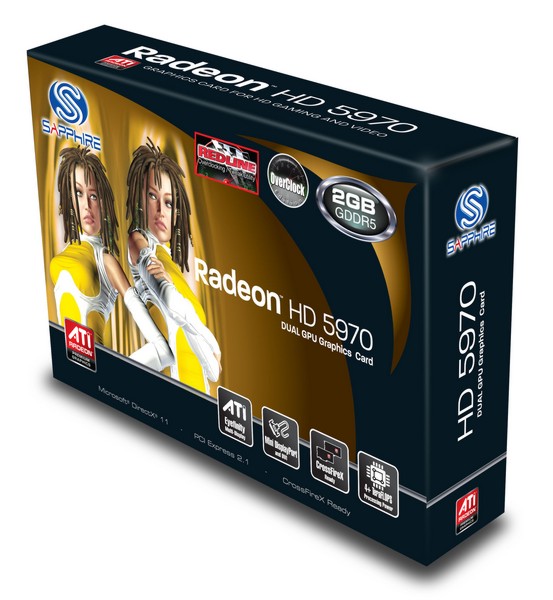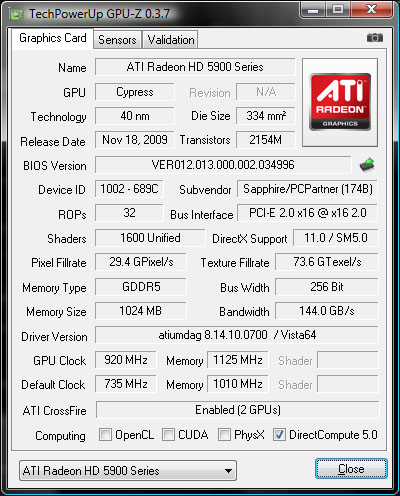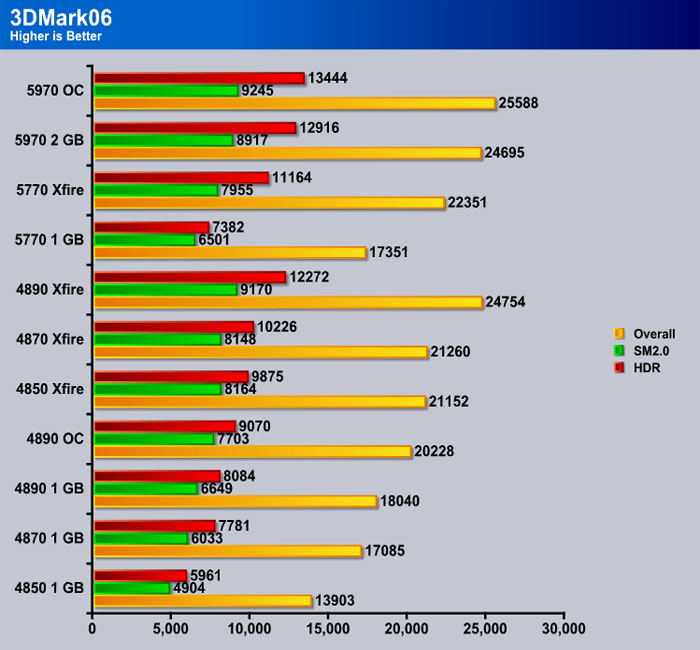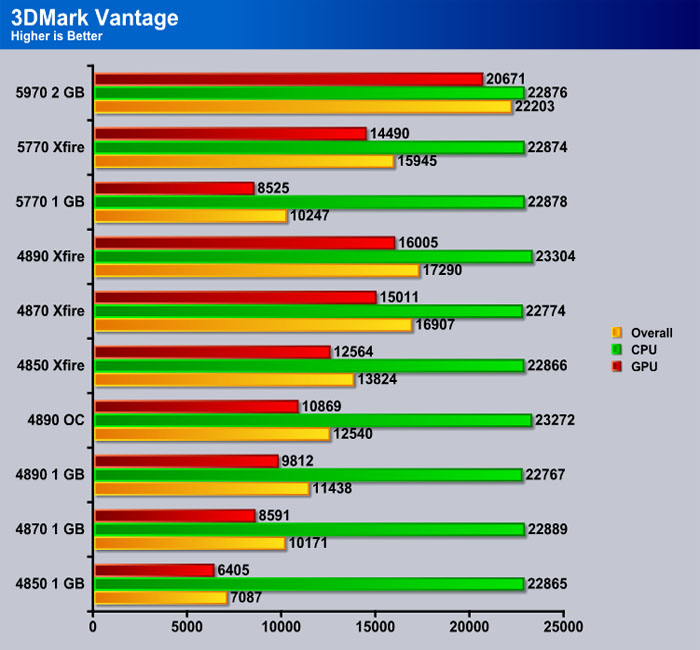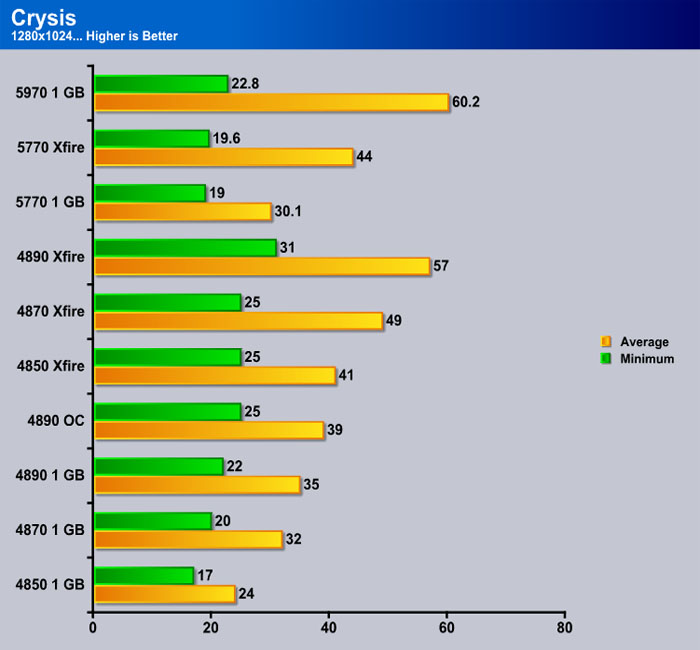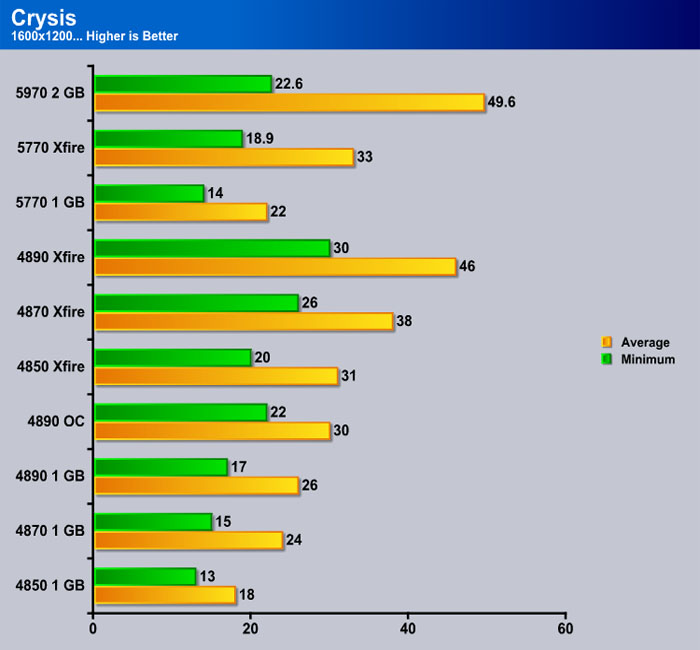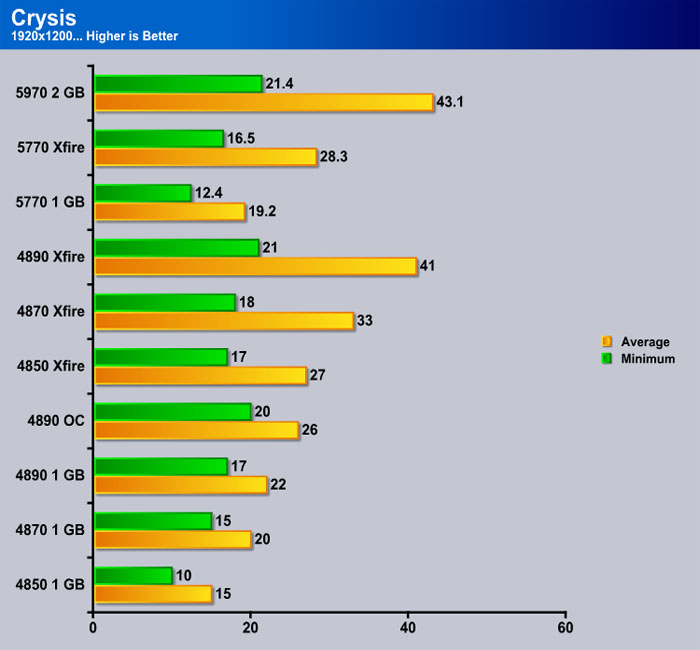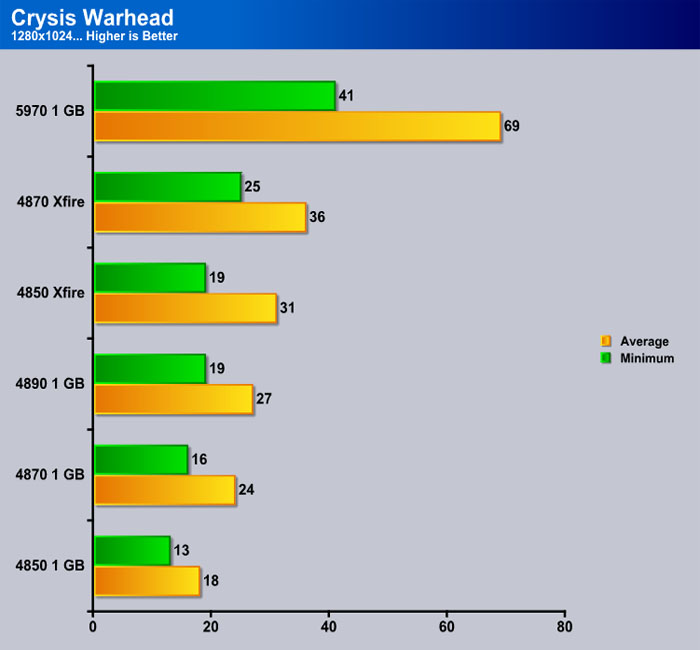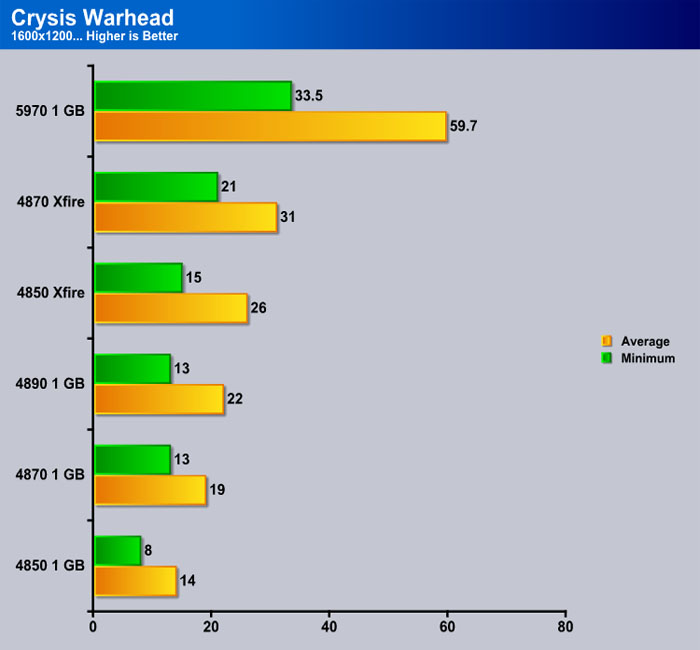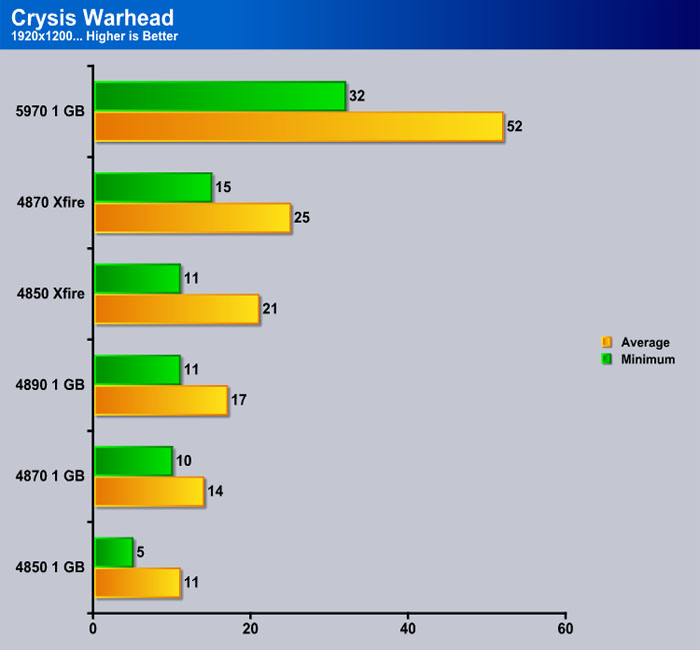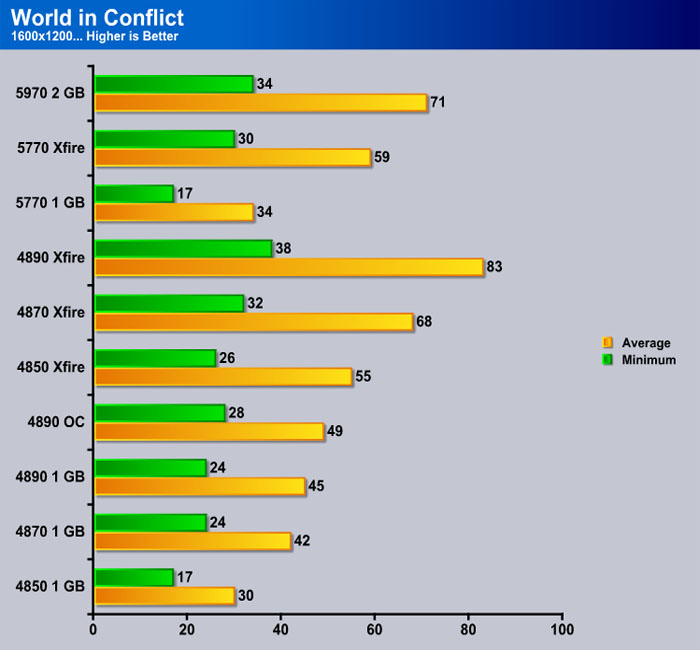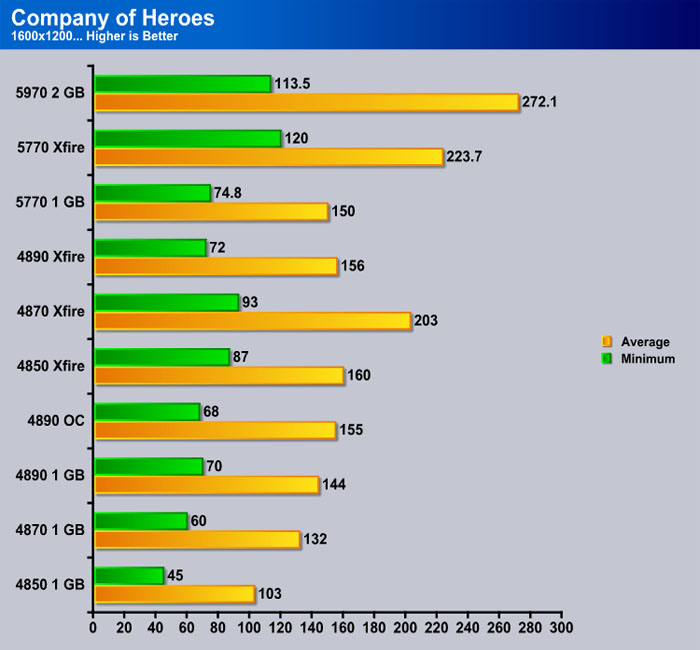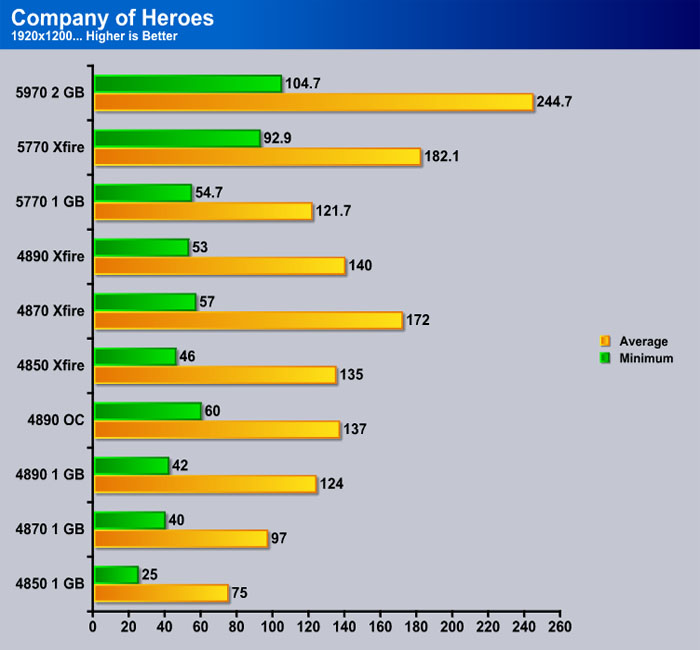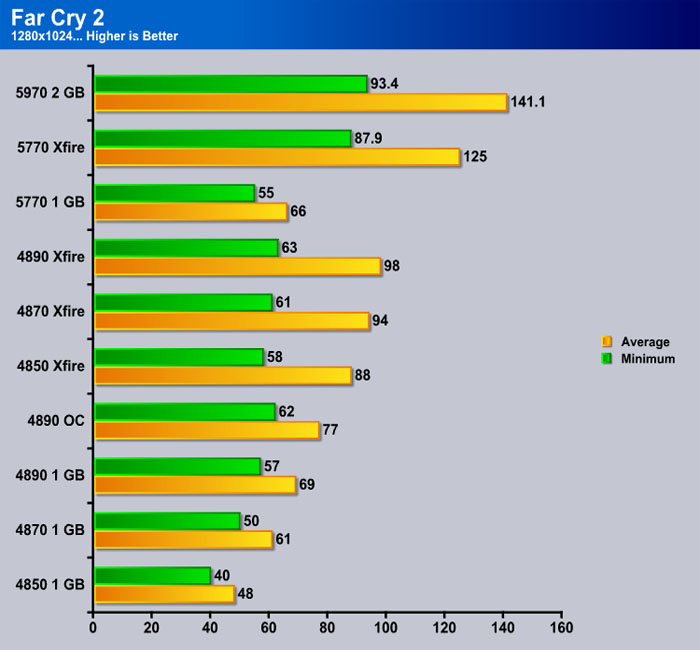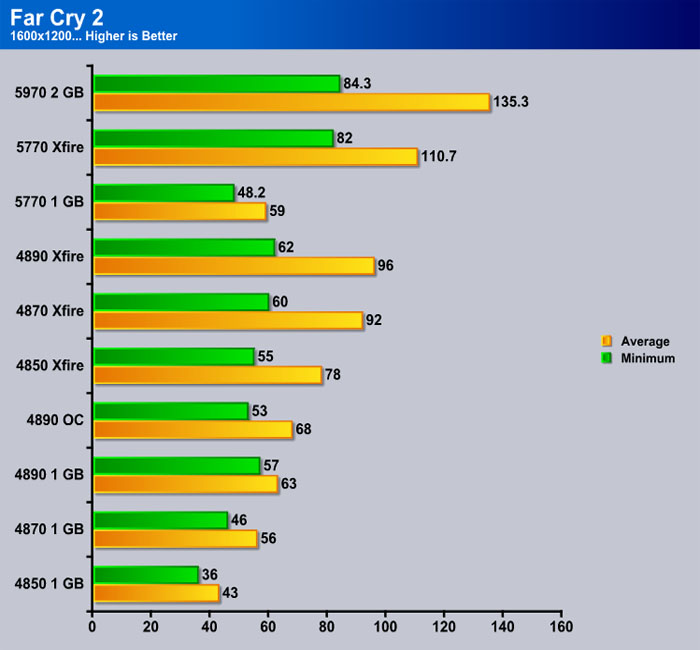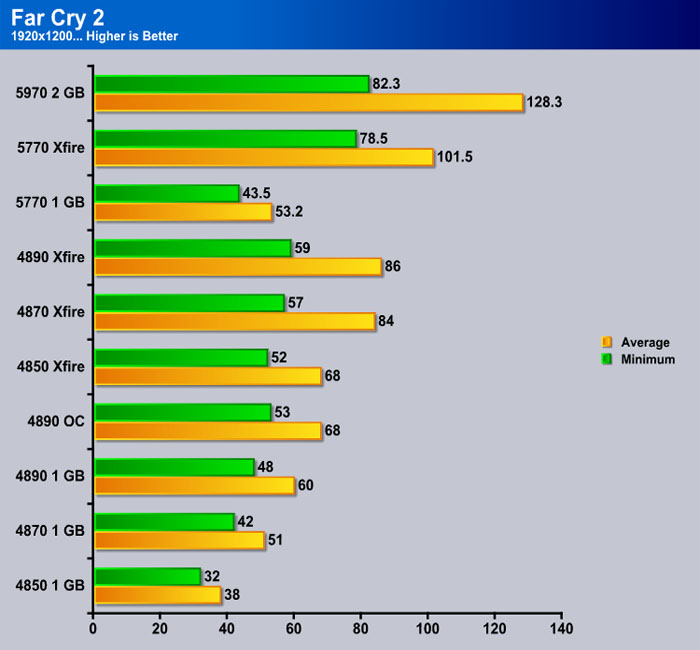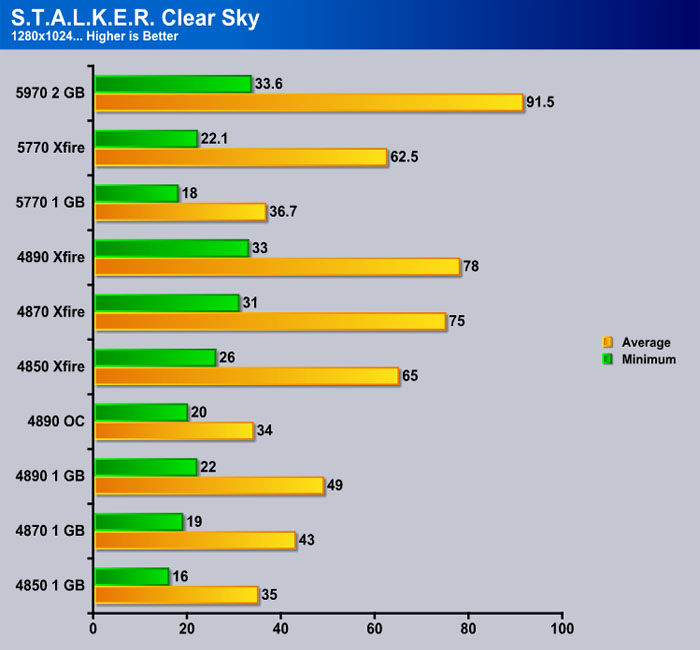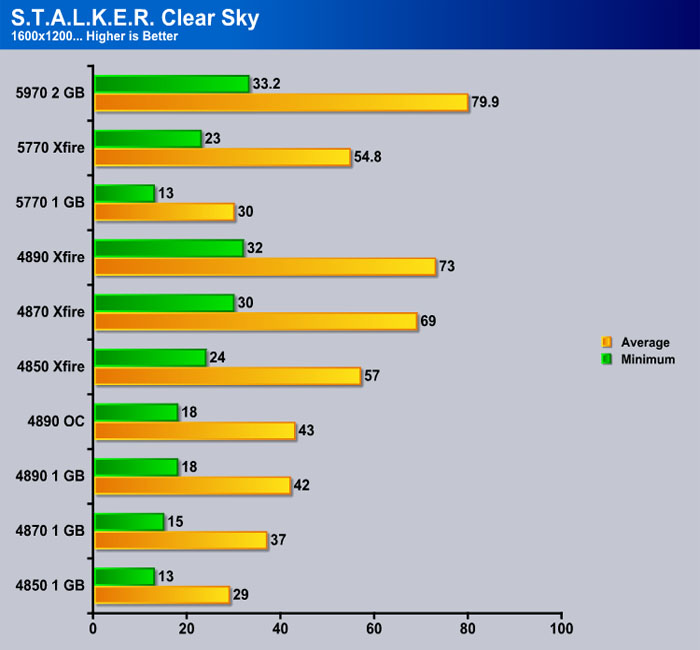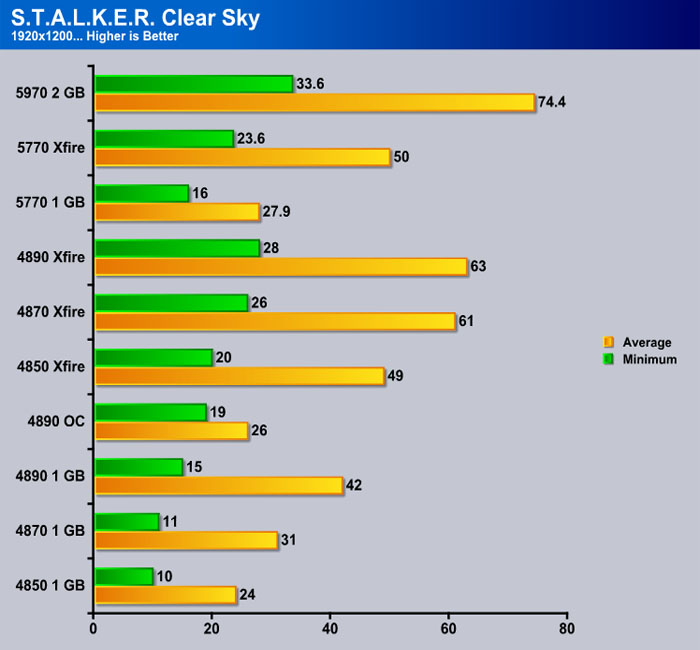Its that time of year again. Christmas is drawing nearer, so why not indulge yourself for a change this year? Today we have (currently) the most powerful GPU on the market, the Sapphire 5970 OC!
Introduction
It seems like every year we are presented with a brand new graphics card that leaps ahead of the competition and steals the performance crown. This last happened when the Nvidia GTX295 jumped ahead of the 4870X2. Recharged, ATI is finally ready to jump ahead of Nvidia with the 5970. ATI made an interesting choice on the name here. Previously they included an X2 after the name of the card’s GPU’s. This time ATI decided to just name the series of cards with a flat number, similar to what Nvidia has done with the GTX295.
In an interesting move Sapphire has decided to not only release their version of the 5970 on launch day, but include an overclocked edition! Overclocked editions have always had marginally better performance, which puts the card at a slight advantage when being researched by the consumer. We expect this to be no different here, and we should actually see slightly more performance since there are two GPU’s on this card. The part that is the most worrisome is the cooling ability of the stock cooler. The 4870X2 no doubt ran very hot if the fan on the card was not turned up. Hopefully this issue will be fixed for the 5970.
Enough of the delay. Lets take a nice look at the card to set the mood.
The card certainly looks pretty huge compared to the box. Lets take a look at the specifics of the 5970.
The HD5970
Here we are already just a few short months after the initial release of the HD 5800’s. ATI has already managed to put two of the most powerful GPU’s on a single PCB. This card doesn’t follow the traditional naming scheme for such a card. Instead they have opted to name the card in a similar fashion to Nvidia’s GTX295. This card is obviously marketed to the enthusiast, and will of course carry a heavy price tag, but lets examine ATI’s slides for the card to understand more about this card.
According to this the 5970 itself is under $500, but the final release price of the card is ~$600 USD. This may be a markup until there is more competition from Nvidia. Its also worth noting that this should be the last big release before ATI fills in all of the gaps in the lower end market. This will at least be somewhat comforting, because at least ATI doesn’t have plans to totally replace the 5970 as of right now.
One thing that I felt was lacking in the release of DX10 was game support. ATI really shows here that DX11 will be completely backed without waiting forever. This may have been one of the things that pushed Nvidia into making the Fermi DX11, but either way with Nvidia also backing DX11 we should see plenty of titles released in 2010.
We see here that the 5970 has the same clocks as a stock 5870. Theoretically two 5870’s in Crossfire should produce similar results, however the card is clocked lower so there may be a small loss in performance. The only downfall that is apparent is the memory, or lack there of. The standard 5970 only has 2 GB of RAM, but the performance of the card should be much higher when the RAM is doubled. The truly amazing part about this card is its power usage. The power usage simply can not be matched, especially by similar Nvidia cards.
Now these are just results from AMD, but I think its a good addition. As you can see here the card simply rips through games despite having ATI Eyefinity enabled. If you truly want to run three monitors, then you definitely need this card to play them maxed without any hiccups. If you look to the third bar you will see Crysis Warhead, and whats this? The game is still playable! I think we may finally have a card that will easily rip through Crysis maxed even on a high resolution!
Sapphire did an interesting design here, they have included two of the “Sapphire girls”. It makes sense when you think about it since this is a dual GPU card. The fan certainly looks familiar. The cooler design is the exact same as all of the other 5 series cards, and we assume that this will continue with future cards.
Ati however has changed the back design. This design looks similar to the cards we used to see. The entire second slot is used to exhaust air out of the card. This is probably a good thing, since there has to be a lot of heat being made down there. The Display Port is not located right between the two DVI connections. I am still waiting on the day when there is finally a stock card that includes a three slot cooling solution, which would no doubt cool this card right down.
The box is pretty standard for any of Sapphire’s GPU’s made in the last couple of years. We of course have the Redline edition today, which features voltage adjustments to both the core and memory. This should definitely help this card separate itself from other 5970’s.
ATI Dual Core GPU Design Philosophy
AMD’s dual-GPU graphics cards in recent times have carried a simple design:
- There are two graphics processors, each with its own memory and voltage regulation circuitry.
- One of the two gets to be connected to the displays.
- Both GPUs then have PCI-Express x16 connections to a PCI-Express bridge chip
- The PCI-Express Bridge chip broadcasts data from the host system,
- Which is directly connected over the card’s PCI-Express x16 interface
- The two GPUs have a CrossFire connection (through the bridge), and can connect to up to two more GPUs
- The card’s internal CrossFire between its GPUs is enabled by default
- The internal CrossFire is neutral to the system it is installed on so
- It doesn’t matter which make the system’s chipset is
- If you have PCI-Express x16 the card will work.
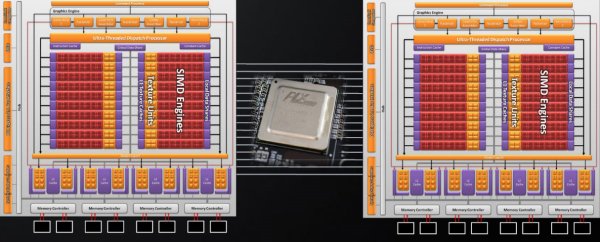
With the Radeon HD 5970, it’s no different:
- Each GPU is based on AMD’s TeraScale 2 Architecture that offers over 2 TFLOPs of processing power.
- Each GPU has 1600 stream processors, arranged into 20 SIMD engines
- Each with 16 thread processors that have 5 processing cores each.
- There are 80 texture units per GPU
- They Have 32 raster operation units
- Built on the 40 nm silicon process by TSMC
- New energy-saving performance profiles with low power draws on idle idle
- Some of the highest performance per Watt
- Each GPU uses a 256-bit wide GDDR5 memory interface, which provides 128 GB/s of memory bandwidth (256 GB/s for the entire card)
The improved PCI-Express bridge chip now supports the new PCI-Express 2.1 standard which renders the 4870×2 Sideport useless because the new PCI-E 2.0 bridge chip provides so much bandwidth. (According to AMD)
| GPU | GeForce GTX 280 |
Radeon HD 4870 X2 |
GeForce GTX 285 |
Radeon HD 5850 |
Radeon HD 5870 |
GeForce GTX 295 |
Radeon HD 5970 |
|---|---|---|---|---|---|---|---|
| Shader units | 240 | 2x 800 | 240 | 1440 | 1600 | 2x 240 | 2x 1600 |
| ROPs | 32 | 2x 16 | 32 | 32 | 32 | 2x 28 | 2x 32 |
| GPU | GT200 | 2x RV770 | GT200b | Cypress | Cypress | 2x GT200b | 2x Cypress |
| Transistors | 1400M | 2x 956M | 1400M | 2154M | 2154M | 2x 1400M | 2x 2154M |
| Memory Size | 1024 MB | 2x 1024 MB | 1024 MB | 1024 MB | 1024 MB | 2x 896 MB | 2x 1024 MB |
| Memory Bus Width | 512 bit | 2x 256 bit | 512 bit | 256 bit | 256 bit | 2x 448 bit | 2x 256 bit |
| Core Clock | 602 MHz | 750 MHz | 648 MHz | 725 MHz | 850 MHz | 576 MHz | 725 MHz |
| Memory Clock | 1107 MHz | 900 MHz | 1242 MHz | 1000 MHz | 1200 MHz | 999 MHz | 1000 MHz |
| Price | $329 | $429 | $340 | $299 | $399 | $500 | $599 |
Compared to other GPU’s, the 5970 looks the most powerful. It is worth noting that the clock of the card are the same as the 5850. Not sure why ATI didn’t just clock the card higher since they claim the card has some serious overclocking head room. Theoretically the 5970 should be almost the same as Crossfire 5870’s clocked at the same speeds. The only thing that I would change about the card is the RAM. The card really would perform better with 4 GB of RAM. Now that we have the card out of the way lets take a look at how we tested this monster.
*If you would like to learn more about the features previously released with the 5800 series, and included in this card take a look at our 5800 series review.
Metholdology
To test this card, we did a fresh load of Vista 64 bit and applied all the patches and updates for the OS, then we updated all the motherboard drivers and made sure that we had the latest 9.11 Catalyst and 190.62 Forceware drivers. We used the included drivers for the 5970 since the card did not have any updated drivers as of writing. We didn’t install any video drivers on the test rig at first, we just installed the basics and then cloned the hard drive using Acronis. That way when we switch from the ATI GPU to the Nvidia GPU we can have a fresh load with no old drivers hanging around to bugger up our benchmark numbers.
We ran each test 3 times and averaged the results, the average of those results are reported here. The one exception to the 3 run rule is Stalker, this test is just so long so all of the individual tests where averaged together. Below is a detailed list of the components used during testing.
| Test Rig | |
| Case | Cooler Master HAF 932 |
| CPU | Intel i7 920 @ 3.7 Ghz |
| Motherboard | Intel DX58SO |
| Ram | (3x2GB) DDR3 @ 1482 8-8-8-20 |
| CPU Cooler | D-Tek Fuzion |
| Hard Drives | Corsair P64 Western Digital 750 GB |
| Optical | LiteOn DVDR |
| GPU’s Tested |
Sapphire HD 5970 |
| Testing PSU | Corsair HX1000 Watt |
Synthetic Benchmarks & Games
| Synthetic Benchmarks & Games | |
| 3DMark Vantage | |
| 3DMark 06 | |
| Stalker Clear Sky Stand Alone Benchmark | |
| Crysis | |
| Crysis Warhead | |
| World In Conflict | |
| Company of Heroes | |
| Far Cry 2 | |
Overclocking
To overclock the Sapphire 5970 I used ATI Catalyst. I slowly increased the clocks by 10 MHz until the system became unstable, then I backed down the clocks a bit and tested for stability. I kept lowering the clocks until the system was rock solid. I used Sapphire’s Redline software to adjust voltages for a higher overclock. Below where my results.
ATI was right when they said this card had some head room. The only thing holding you back is how much voltage you are comfortable with. This was tested with a GPU voltage of 1.1625 volts, which is the highest the Redline software will let you go. Also worth noting is the Redline software did not work at all on our review sample. I had to use MSI Afterburner to manually change the GPU voltage. Since there was no memory voltage option I didn’t really mess with it, but I am sure there is a lot of head room there as well. Lets take a look at how this affects performance.
As you can see, the score is not improved by much, but it is improved. I was surprised that the card didn’t actually score higher with as high of an overclock it had. Perhaps there is some underlying issue with the drivers or with the CPU not being able to feed the GPU fast enough.
3DMARK06 V. 1.1.0
3DMark06 developed by Futuremark, is a synthetic benchmark used for universal testing of all graphics solutions. 3DMark06 features HDR rendering, complex HDR post processing, dynamic soft shadows for all objects, water shader with HDR refraction, HDR reflection, depth fog and Gerstner wave functions, realistic sky model with cloud blending, and approximately 5.4 million triangles and 8.8 million vertices; to name just a few. The measurement unit “3DMark” is intended to give a normalized mean for comparing different GPU/VPUs. It has been accepted as both a standard and a mandatory benchmark throughout the gaming world for measuring performance.
The 5970 falls a bit behind here. This could have been because of the premature drivers, or any number of things. Over 24k is nothing to be disappointed about though.
3DMark Vantage
For complete information on 3DMark Vantage Please follow this Link:
www.futuremark.com/benchmarks/3dmarkvantage/features/
The newest video benchmark from the gang at Futuremark. This utility is still a synthetic benchmark, but one that more closely reflects real world gaming performance. While it is not a perfect replacement for actual game benchmarks, it has its uses. We tested our cards at the ‘Performance’ setting.
Currently, there is a lot of controversy surrounding NVIDIA’s use of a PhysX driver for its 9800 GTX and GTX 200 series cards, thereby putting the ATI brand at a disadvantage. Whereby installing the PyhsX driver, 3DMark Vantage uses the GPU to perform PhysX calculations during a CPU test, and this is where things get a bit gray. If you look at the Driver Approval Policy for 3DMark Vantage it states; “Based on the specification and design of the CPU tests, GPU make, type or driver version may not have a significant effect on the results of either of the CPU tests as indicated in Section 7.3 of the 3DMark Vantage specification and white paper.” Did NVIDIA cheat by having the GPU handle the PhysX calculations or are they perfectly within their right since they own Ageia and all their IP? I think this point will quickly become moot once Futuremark releases an update to the test.
Now this is a much better result for the 5970! The 5970 pretty much whipped the floor with every other setup here. A score of 22k is definitely a nice score for a single card setup!
Crysis v. 1.21
Crysis is the most highly anticipated game to hit the market in the last several years. Crysis is based on the CryENGINE™ 2 developed by Crytek. The CryENGINE™ 2 offers real time editing, bump mapping, dynamic lights, network system, integrated physics system, shaders, shadows, and a dynamic music system, just to name a few of the state-of-the-art features that are incorporated into Crysis. As one might expect with this number of features, the game is extremely demanding of system resources, especially the GPU. We expect Crysis to be a primary gaming benchmark for many years to come.
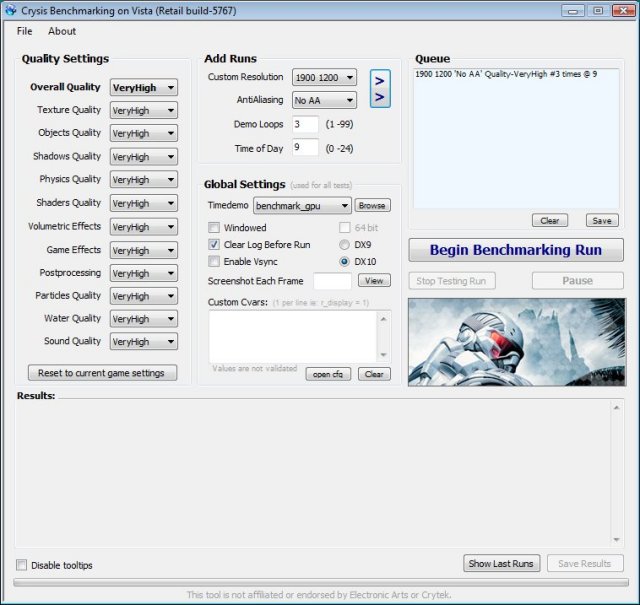
The 4890 Xfire is deathly close to the 5970 here. The 5970 is most likely bottlenecked here by the CPU.
The bottleneck theory was apparently wrong. The minimum frame rate for the 5970 barely changes.
When the resolution is increased the 4890 Xfire setup is still very close. The minimum frame rate of the 5970 finally manages to surpass that of the 4890 Crossfire.
CRYSIS WARHEAD
Crysis Warhead is the much anticipated sequel of Crysis, featuring an updated CryENGINE™ 2 with better optimization. It was one of the most anticipated titles of 2008.

The 5970 has a complete turn around in Warhead. For some reason ATI cards never seem to like Crysis all that much. This is always very apparent to me in Warhead.
The 5970 still easily keeps its lead. The other cards all fall in line, but the Crossfire setups are scoring lower than they should.
The 5970 still easily beats all of the other cards in the test. Its nice to finally see a ATI card be able to not fail in Warhead. The results are show that this card really blows through Crysis Warhead. About time this sub-par coded game was tamed.
World in Conflict
World in Conflict is a real-time tactical video game developed by the Swedish video game company Massive Entertainment, and published by Sierra Entertainment for Windows PC. The game was released in September of 2007. The game is set in 1989 during the social, political, and economic collapse of the Soviet Union. However, the title postulates an alternate history scenario where the Soviet Union pursued a course of war to remain in power. World in Conflict has superb graphics, is extremely GPU intensive, and has built-in benchmarks. Sounds like benchmark material to us!
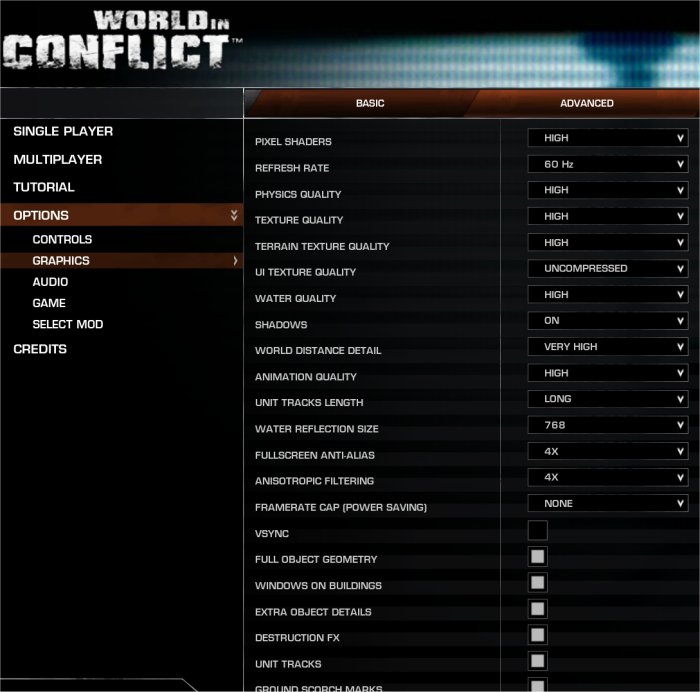
The 5970 is defeated here by quite a bit. I think drivers are primarily to blame.
The minimum frame rate of the 5970 increases a bit here, but the average frame rate is the exactly the same as the previous test.
When the resolution is increased we see almost the same exact results as before. This is a very odd result to say the least. This problem is most likely a driver error with the game.
Company of Heroes
Company of Heroes(COH) is a Real Time Strategy(RTS) game for the PC, announced on April, 2005. It is developed by the Canadian based company Relic Entertainment and published by THQ. COH is an excellent game that is incredibly demanding on system resources thus making it an excellent benchmark. Like F.E.A.R., the game contains an integrated performance test that can be run to determine your system’s performance based on the graphical options you have chosen. Letting the games benchmark handle the chore takes the human factor out of the equation and ensures that each run of the test is exactly the same producing more reliable results.
The 5970 is just barely edged out by the 5770 Xfire here. Since the frame rate is so high, I think we may be seeing a CPU bottleneck.
My suspicions where correct, the CPU definitely was a bottleneck. The 5770 Xfire was able to just beat out the minimum frame rate of the 5970, but since it was well over 30 FPS you could never see the difference.
Once again the 5970 has a commanding lead. There is not much else to say here, the 5970 performed as it should, and even created a CPU bottleneck in the lowest resolution.
Far Cry 2
Far Cry 2, released in October 2008 by Ubisoft, was one of the most anticipated titles of the year. It’s an engaging state-of-the-art First Person Shooter set in an un-named African country. Caught between two rival factions, you’re sent to take out “The Jackal”. Far Cry2 ships with a full featured benchmark utility and it is one of the most well designed, well thought out game benchmarks we’ve ever seen. One big difference between this benchmark and others is that it leaves the game’s AI (Artificial Intelligence) running while the benchmark is being performed.

The 5970 was the clear winner here. It did not perform a whole lot better than 5770 Crossfire, but better none the less. For $600 the card should really be higher though.
The CPU could have very well been a bottleneck since the results here where very close to those of the lower resolution. The 5770 Crossfire is still pretty close to the same performance.
The scores once again are very close to the previous scores. The 5970 is easily beating everything on the charts for the most part. The drivers seem to be some what of an issue at this time though.
S.T.A.L.K.E.R. Clear Sky
S.T.A.L.K.E.R. Clear Sky is the latest game from the Ukrainian developer, GSC Game World. The game is a prologue to the award winning S.T.A.L.K.E.R. Shadow of Chernoble, and expands on the idea of a thinking man’s shooter. There are many ways you can accomplish your mission, but each requires a meticulous plan, and some thinking on your feet if that plan makes a turn for the worst. S.T.A.L.K.E.R. is a game that will challenge you with intelligent AI, and reward you for beating those challenges. Recently GSC Game World has made an automatic tester for the game, making it easier than ever to obtain an accurate benchmark of Clear Skie’s performance.

As expected, the 5970 was far ahead of any other card in testing. The minimum frame rate was about the same, but this was over 30 FPS, so you wont notice any break in the action.
The 4890 Xfire almost catches the 5970 here, but the 5970 manages to pull ahead. The minimum frame rate for the 5970 barely changes. This will allow the game to easily be played at this resolution with maximum settings.
The 5970 starts to pull further ahead of the 4890 Xfire here. This is most likely due to the bandwidth advantage the 5970 has. The minimum frame rate once again stays in the same area.
Temperatures
The Sapphire 5970 Redline certainly looked like it might have issues running cool with just a dual slot cooler. I let the fan run at auto speed, which gave the sweet spot between noise and performance. Throughout testing the fan was inaudible unless it had been stressed for awhile. The fan never went fast enough to make you go deaf, but it did get loud. To test the load temperature I loaded up Furmark 1.7, and let it run for 30 minutes. I then recorded the maximum temperature reached. To test the idle temperature I let the card sit with no programs running. Below is a table of the results.
| Idle | Load |
|---|---|
| 41° C |
82° C |
The idle temperature was quite good for a dual GPU card. The load temperature was also within specs. When the card hit 82 the fan speed up to 45%, and the GPU temperature went down to 78° C.
Conclusion
To say the least the Sapphire 5970 is a monster. Not only is the card ridiculously long, but also extremely powerful. If you plan on trying to fit this into a mid tower case you can pretty much forget that unless you have a removable HDD cage. Even if you have a full tower you might have to do some rearranging if you have a water cooling system. Luckily my case had just enough room between the HDD cage and the card to fit my 3/4″ OD water tubes in. They where not left with much breathing room, so if you go any bigger it probably won’t fit.
Unfortunately ATI did not have any full release drivers as of release of the card. Current drivers are a beta version, which is probably why some of the results where a bit weird. Even with the short comings, this card easily outperforms the GTX295, which is still $500 USD. This puts this card at a simply unbeatable position as not only the best card, but as one of the best performance to price ratio cards currently.
The Redline software included with this card only makes the deal sweeter. With this software you can increase the voltage of the card, and do an extreme overclock to net you huge gains in performance on top of the already incredible performance of this card. Usually such software comes at a premium price, but this card is in line (price wise) with all of the normal 5970’s. Sapphire factory overclocks this card to 735 MHz on the core, and 1010 MHz on the memory, so this card will perform marginally better than a stock clocked 5970, but not enough to notice it in game.
We are using this scale with our scoring system to provide additional feedback beyond a flat score. Please note that the final score isn’t an aggregate average of the rating system.
- Performance 10
- Value 9
- Quality 9
- Warranty 8
- Features 9
- Innovation 9
Pros:
+ Performance
+ Length (We like them big ;))
+ Voltage Options
Cons:
– No Buy One Get One Half Off
Overall the Sapphire 5970 Redline was the best performing card we have ever seen, and had an amazing price compared to similar products from Nvidia. This is why the card earns a 9 out of 10 and the Bjorn3D Golden Bear Award.
 Bjorn3D.com Bjorn3d.com – Satisfying Your Daily Tech Cravings Since 1996
Bjorn3D.com Bjorn3d.com – Satisfying Your Daily Tech Cravings Since 1996
